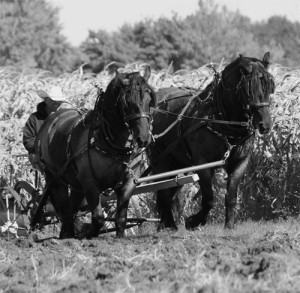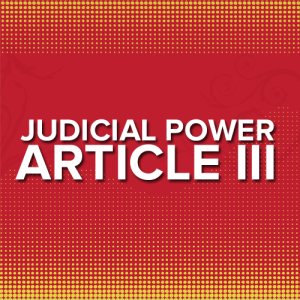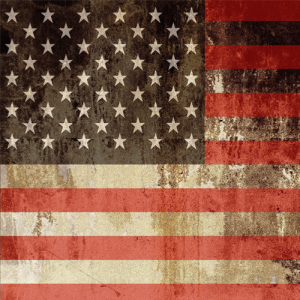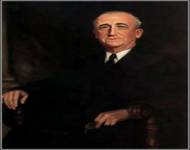Menu
Hot-Topics
December 24, 2025 | Supreme Court Allows Texas to Use Challenged Congressional Map
Category: Supreme Court Decisions

Pollock v. Farmers Loan & Trust Co.: Federal Income Tax Violated the Constitution
In Pollock v. Farmers Loan & Trust Co., 157 U.S. 429 (1895), the U.S. Supreme Court held that federal taxes on interest, dividends and rents violated Article 1 of the U.S. Constitution. In 1913, the adoption of the Sixteenth Amendment nullifi...

Campbell-Ewald Co. v. Gomez: Class Actions and Article III
In Campbell-Ewald Co. v. Gomez, 577 U. S. ____ (2016), the U.S. Supreme Court considered whether a case becomes moot, and thus beyond the judicial power of Article III, when the plaintiff receives and rejects an offer of complete relief on his claim....

United States v. E.C. Knight: Court Upholds Sherman Anti-Trust Act
In United States v. E.C. Knight, 156 U.S. 1 (1895), the U.S. Supreme Court held that the Sherman Anti-Trust Act was a valid exercise of Congress’ power under the Commerce Clause of the U.S. Constitution. However, it also held that the statute could...

Hurst v. Florida: Only a Jury Can Impose the Death Sentence
On January 12, 2016, the U.S. Supreme Court struck down Florida’s capital-sentencing scheme in Hurst v. Florida, 577 U. S. (2016). By a vote of 8-1, the justices held that allowing the trial judge to have the final say on a death sentence violated ...

Kingsley v. Hendrickson: The Objectively Unreasonable Standard for Excessive Force Claims
In Kingsley v. Hendrickson, 576 US _ (2015), the U.S. Supreme Court addressed the legal standard for finding unconstitutionally excessive force during pre-trial detention. By a vote of 5-4, the justices held that a pretrial detainee pursuing an ex...

Abood v. Detroit Board of Education: Public Unions, “Agency Shop” and the First Amendment
In Abood v. Detroit Board of Education, 431 U.S. 209 (1977), the U.S. Supreme Court held that the First Amendment to the U.S. Constitution does not prohibit governments from requiring non-union public employees to pay their “fair share” of dues f...

Johnson v. the United States: ACCA Unconstitutionally Vague
In Johnson v. the United States, 576 US _ (2015), the U.S. Supreme Court held that the residual clause of the Armed Career Criminal Act was unconstitutionally vague and violated the due process rights of the petitioner. The statute imposes increased ...

Alabama Dept. of Revenue v. CSX Transportation: Tax Discrimination under the 4-R Act
In Alabama Dept. of Revenue v. CSX Transportation, 135 S.Ct. 1136 (2015), the U.S. Supreme Court addressed what constitutes tax discrimination under the Railroad Revitalization and Regulation Reform Act of 1976, otherwise known as the “4-R Act.” ...

Jennings v. Stephens: Certificate of Appealability Not Required for Habeas Petitioner
In Jennings v. Stephens, 135 S.Ct. 793 (2015), the U.S. Supreme Court addressed how to apply the Court’s decision in United States v. American Railway Express Co., 265 U. S. 42 (1924) to habeas relief. In that case, the Court held that an appellee ...

Davis v. Ayala: Excluding Attorneys from Batson Hearing Was Harmless Error
In Davis v. Ayala, 135 S. Ct. 2187 (2015), the U.S. Supreme Court considered whether it was a harmless error to exclude defense counsel from the Batson hearing. A deeply divided court ultimately answered yes, highlighting that habeas petitioners are ...
Previous Articles
Justices Skeptical of Trump Administration Tariffs
by DONALD SCARINCI on December 18, 2025
The U.S. Supreme Court heard oral arguments in Learning Resources, Inc. v. Trump (consolidated with...
SCOTUS Takes Up Key Election Case Involving Mail-In Ballots
by DONALD SCARINCI on December 17, 2025
The U.S. Supreme Court recently granted certiorari in a key election case, Watson v. Republican Nat...
SCOTUS Adds Second Amendment Case to Docket
by DONALD SCARINCI on November 27, 2025
The U.S. Supreme Court will consider another important Second Amendment case this term. The latest ...
The Amendments
-
Amendment1
- Establishment ClauseFree Exercise Clause
- Freedom of Speech
- Freedoms of Press
- Freedom of Assembly, and Petitition
-
Amendment2
- The Right to Bear Arms
-
Amendment4
- Unreasonable Searches and Seizures
-
Amendment5
- Due Process
- Eminent Domain
- Rights of Criminal Defendants
Preamble to the Bill of Rights
Congress of the United States begun and held at the City of New-York, on Wednesday the fourth of March, one thousand seven hundred and eighty nine.
THE Conventions of a number of the States, having at the time of their adopting the Constitution, expressed a desire, in order to prevent misconstruction or abuse of its powers, that further declaratory and restrictive clauses should be added: And as extending the ground of public confidence in the Government, will best ensure the beneficent ends of its institution.
Awards





